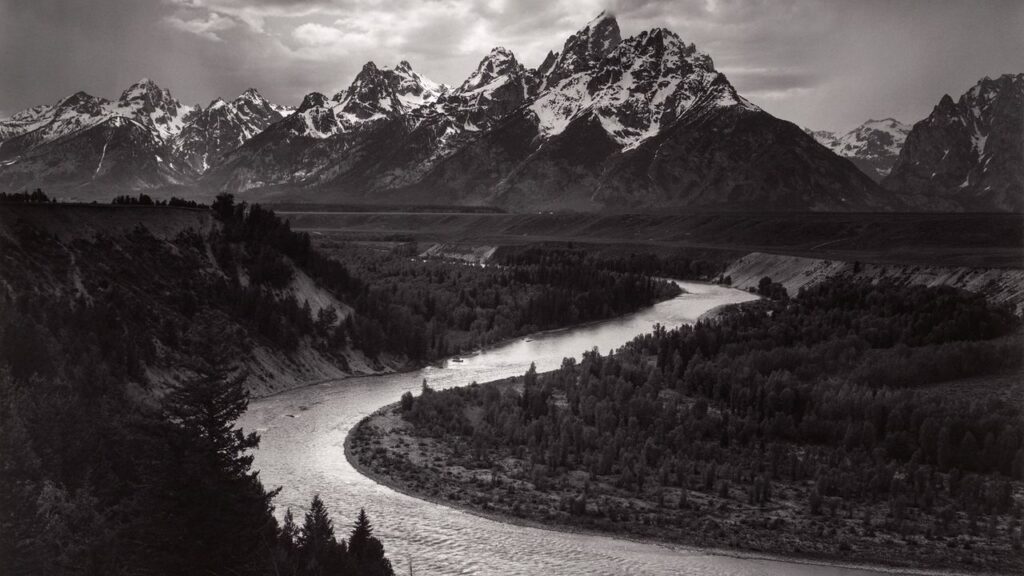
Ansel Adams uses a large format view camera, where he used the lowest aperture, f/64 which allowed him to capture the fine detail and sharpness across the whole photo, allowing him to print larger images. The smaller the aperture, means a greater depth of field is created. Ansel Adams captures his photos mainly on black and white film still, which helps focus the viewers attention, whilst emphasising shapes rather than colours. This creates an interesting effect because we can also see the contrast in colour, which creates a unique gradients of darker and lighter grey tones.
The depth created in the photo is elevated by the snake river that runs up the middle of the photo, creating a unique depth of field leading us up to the mountains. This creates an important focus point in the landscape as the darker tones creates contrast, giving a dramatic effect as they are softly elevated by the speckled lighter tones that outline areas, creating a more warmer tone and feel. As we can see from areas of the sky and the river, the light that shines and outlines areas creates a smooth but rough texture in places. As the viewer we pay more attention to the lighter areas as we would typically notice this straight away, as they are exaggerated and highlighted more by the darker tones that surround these areas.
The Tetons and Snake River is one of the most famous pieces of photography in the world, inspiring many photographers. Some described the photo as ‘iconic’ because of the unique setting and compositions. The particular way you get lost looking up the river, gives an elevated and sinuous sense of reading, making you look and move in an indirect and curving way. Making you feel calm because it softly changes direction whilst flowing off into the distance. This effect is also created by the subtle contrast in light, as it changes from the very illuminated areas to darker areas.
Ansel Adams communicates to the viewer the ‘greatness of nature.’ He used the river because he wanted our eyes to circulate in the river, which would lead our eyes up into the mountains. Adams used the late afternoon light which creates reflection and balances the exposure, elevating the texture and compositions in the landscape. It dramatises the landscape, because of the shadows created whilst it also exaggerates the textures throughout.
